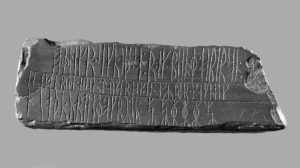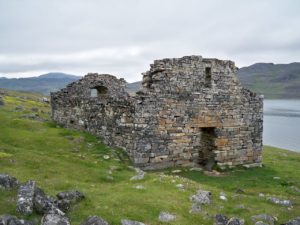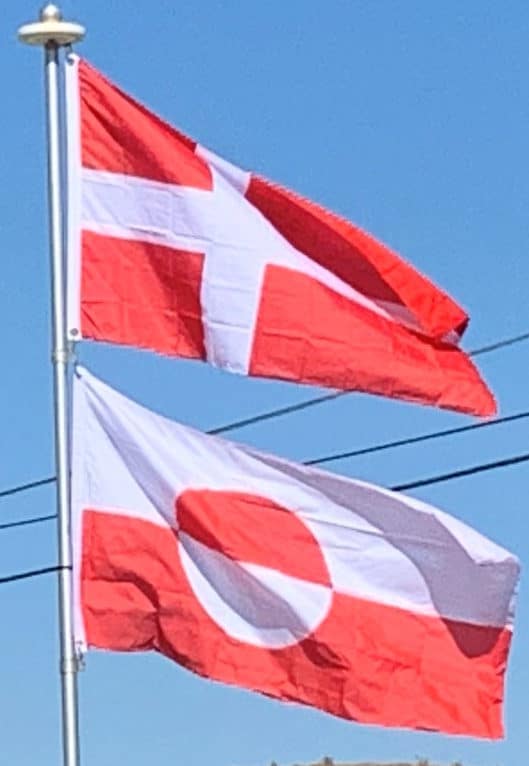
The Norse settlements, such as Brattahlíð, thrived for centuries but disappeared sometime in the 15th century, perhaps at the onset of the Little Ice Age. Apart from some runic inscriptions, no contemporary records or historiography survives from the Norse settlements. Medieval Norwegian sagas and historical works mention Greenland’s economy as well as the bishops of Gardar and the collection of tithes. A chapter in the Konungs skuggsjá (The King’s Mirror) describes Norse Greenland’s exports and imports as well as grain cultivation.
Icelandic saga accounts of life in Greenland were composed in the 13th century and later, and do not constitute primary sources for the history of early Norse Greenland. Modern understanding therefore mostly depends on the physical data from archaeological sites. Interpretation of ice core and clam shell data suggests that between 800 and 1300, the regions around the fjords of southern Greenland experienced a relatively mild climate several degrees Celsius higher than usual in the North Atlantic, with trees and herbaceous plants growing, and livestock being farmed. Barley was grown as a crop up to the 70th parallel. What is verifiable is that the ice cores indicate Greenland has had dramatic temperature shifts many times over the past 100,000 years. Similarly the Icelandic Book of Settlements records famines during the winters, in which “the old and helpless were killed and thrown over cliffs”.
One of the last contemporary written mentions of the Norse Greenlanders records a marriage which took place in 1408 in the church of Hvalsey — today the best-preserved Nordic ruins in Greenland.
These Icelandic settlements vanished during the 14th and early 15th centuries. The demise of the Western Settlement coincides with a decrease in summer and winter temperatures. A study of North Atlantic seasonal temperature variability during the Little Ice Age showed a significant decrease in maximum summer temperatures beginning in the late 13th century to early 14th century — as much as 6 to 8 °C (11 to 14 °F) lower than modern summer temperatures. The study also found that the lowest winter temperatures of the last 2000 years occurred in the late 14th century and early 15th century. The Eastern Settlement was likely abandoned in the early to mid-15th century, during this cold period.

Theories drawn from archaeological excavations at Herjolfsnes in the 1920s, suggest that the condition of human bones from this period indicates that the Norse population was malnourished, maybe due to soil erosion resulting from the Norsemen’s destruction of natural vegetation in the course of farming, turf-cutting, and wood-cutting. Malnutrition may also have resulted from widespread deaths due to pandemic plague; the decline in temperatures during the Little Ice Age; and armed conflicts with the Skrælings (Norse word for Inuit, meaning “wretches”). In 1379, the Inuit attacked the Eastern Settlement, killed 18 men and captured two boys and a woman. Recent archaeological studies somewhat challenge the general assumption that the Norse colonization had a dramatic negative environmental effect on the vegetation. Data support traces of a possible Norse soil amendment strategy. More recent evidence suggests that the Norse, who never numbered more than about 2,500, gradually abandoned the Greenland settlements over the 1400s as walrus ivory, the most valuable export from Greenland, decreased in price due to competition with other sources of higher-quality ivory, and that there was actually little evidence of starvation or difficulties.
